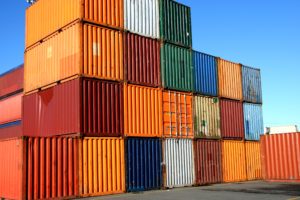Chinese authorities have asked major container lines to inject more capacity and less aggressively raise rates in the trans-Pacific trade as spot rates hit highs.
According to the JOC.com report, representatives from the Chinese ministry of transportation and communications gave this guidance to a group of major carriers during a meeting in Shanghai last week. It’s being reported by two container line executives — one with a Europe-based and the other with an Asia-based carrier — that Cosco Shipping has agreed to suspend a Sept. 15 general rate increase.
When container lines adjust trans-Pacific capacity, it’s key to lifting profit despite lower global container volumes. Carriers posted their most profitable second quarter since 2010—$2.7 billion, according to the latest Sunday Spotlight report from Sea-Intelligence Maritime Analysis.
The Chinese government is aware of the escalating cost to supply chains for U.S. importers. Rates have been at record levels with no ceiling in sight with carriers making general rate increases (GRI) of $400 to $800 per container every 15 days for several months in a row.
During last week’s meeting, Chinese government officials asked several key questions, including how spot market rates are calculated and how carriers manage capacity with blanking sailings (pulling vessels out of the system). A number of carriers are planning for blank sailings during the China Golden Week holiday even with record rate levels and container volumes.
Carriers are concerned about the Chinese government regulating their ability to pull space out of the system when volumes drop. With three steamship line alliances currently in play in the industry, carriers have the ability to manipulate space versus volumes to keep rates elevated (and raise rates).
Expect the Chinese government to continue to watch the industry closely. These officials will expect what we all expect: rates to lower gradually to a reasonable level during slower shipping periods. What’s the reasonable rate for the rest of 2020 and into 2021? That’s the real question.

